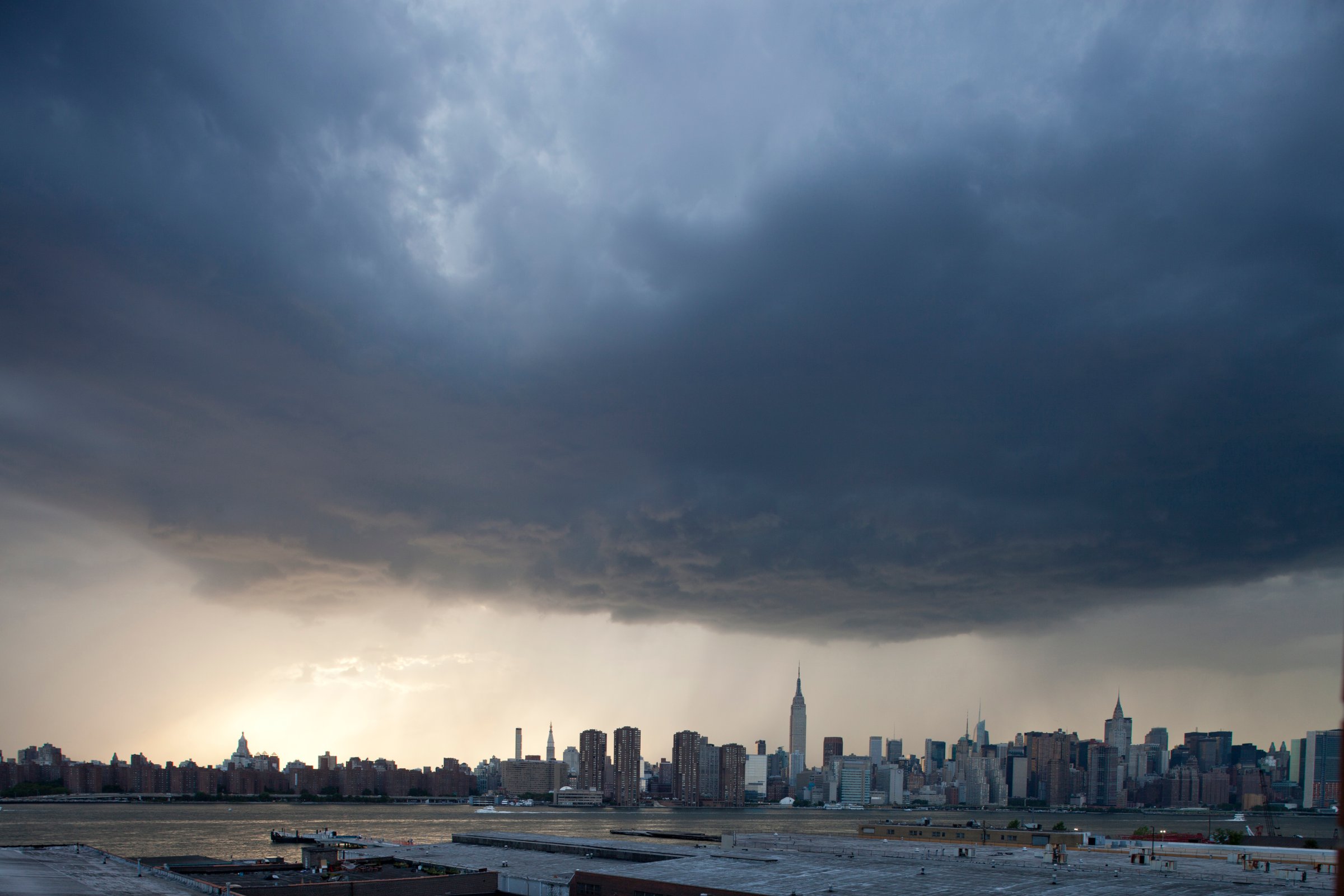
Flood risk in New York City has increased in recent decades due to human-caused sea level rise and the related storm surge that occurs during cyclones, according to a new study. Climate change threatens to exacerbate the risk storms pose to the largest city in the United States.
Researchers, writing in the journal PNAS, evaluated sediment at different points along the shore in New Jersey to compare sea levels between 1970 and 2005 and sea levels between 850 and 1800. Prior to 1800, a flood that was 2.25 m (7.4 ft) above sea level occurred once every 500 years. Since 1970, a storm of that size occurs approximately every 24 years.
“This is going from something you probably won’t see in your lifetime to something you may see several times in your lifetime,” said Andra Reed, a researcher at Penn State University.
Sea levels rose slightly between 850 and 1800 due to natural causes that include melting glaciers, according to Reed. Scientists have shown such changes to be part of the natural variation in sea levels. But the rate of rise pales in comparison to recent decades, when sea levels have risen by 2 millimeters (.08 inches) per year on average. Nearly 90% of that rise has been the result of human activity, research has shown.
Read More: These Are the Cities Most Vulnerable to the Next Katrina
Potential for disaster increases when rising sea levels combine with stronger storm surges, also a product of human caused climate change. Storm surge occurs when water levels temporarily rise during a storm and weather conditions push that water ashore.
The study, which comes just a month before the three-year anniversary of Hurricane Sandy, adds to evidence showing the importance of investments in disaster preparedness. Sandy killed more than 200 and caused $75 billion in damage. That storm would have been a once-in-3,000 year event a few centuries ago, but today it’s once in 130-year storm, according to Reed.
“These flood heights are recurring more frequently,” said Reed. “That really does call for advanced risk management strategies.”
More Must-Reads from TIME
- Donald Trump Is TIME's 2024 Person of the Year
- Why We Chose Trump as Person of the Year
- Is Intermittent Fasting Good or Bad for You?
- The 100 Must-Read Books of 2024
- The 20 Best Christmas TV Episodes
- Column: If Optimism Feels Ridiculous Now, Try Hope
- The Future of Climate Action Is Trade Policy
- Merle Bombardieri Is Helping People Make the Baby Decision
Write to Justin Worland at justin.worland@time.com